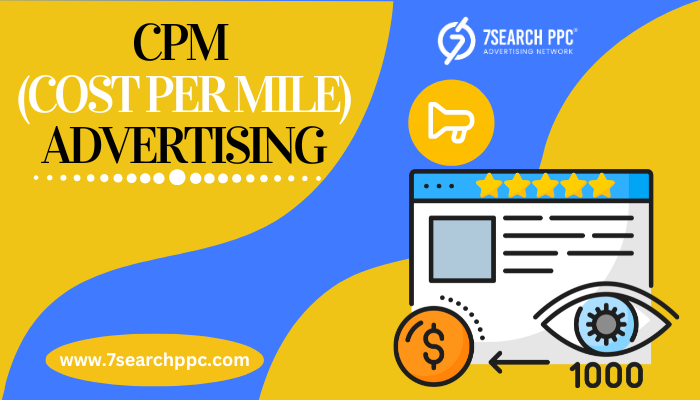What Is Online Advertising? Basic Guide to Online Ads

Strong 8k brings an ultra-HD IPTV experience to your living room and your pocket.
In today’s digital age, online advertising has become an essential component of marketing strategies for businesses of all sizes. As consumers increasingly turn to the internet for information, entertainment, and shopping, understanding how to effectively leverage online ads is crucial for success. This comprehensive guide will explore the world of online advertising, its different forms, and how businesses can utilize it to reach their target audiences effectively.
Understanding Online Advertising
What Is Online Advertising?
Online advertising refers to any form of marketing that promotes products or services through the internet. This method allows businesses to reach a wider audience than traditional advertising methods, offering the flexibility to target specific demographics, locations, and interests.
Importance of Online Advertising
The significance of online advertising lies in its ability to connect businesses with potential customers at scale. The benefits include:
- Wider Reach: The internet allows businesses to reach a global audience.
- Cost-Effectiveness: Online ads can be more affordable than traditional media, with options for various budgets.
- Measurable Results: Digital advertising platforms provide analytics that helps measure the effectiveness of campaigns.
- Targeted Advertising: Businesses can tailor their ads to specific demographics, increasing the likelihood of conversion.
Types of Online Advertising
Search Engine Advertising
Overview of Search Engine Advertising
Search engine advertising involves placing ads on search engine results pages (SERPs). This is often done through pay-per-click (PPC) campaigns, where advertisers pay each time a user clicks on their ad.
Benefits of Search Engine Advertising
- Immediate Visibility: Ads appear at the top of search results, increasing visibility.
- High Intent: Users searching for specific terms are often ready to make a purchase or inquire about services.
- Budget Control: Advertisers can set daily budgets and bid amounts.
Display Advertising
What Is Display Advertising?
Display advertising uses visually engaging ads that appear on websites, apps, and social media. These ads can include images, videos, and animations.
Types of Display Ads
- Banner Ads: Rectangular ads placed at the top or sides of web pages.
- Rich Media Ads: Interactive ads that may include video, audio, or other elements.
- Retargeting Ads: Ads targeting users who have previously visited a site, encouraging them to return.
Social Media Advertising
Exploring Social Media Advertising
Social media advertising involves promoting products or services through social media platforms like Facebook, Instagram, Twitter, and LinkedIn.
Advantages of Social Media Advertising
- Targeted Campaigns: Advertisers can target specific audiences based on interests, behaviors, and demographics.
- Engagement Opportunities: Social media allows for direct interaction with customers.
- Creative Formats: Various ad formats, including stories, carousel ads, and sponsored posts, enhance user engagement.
Video Advertising
What Is Video Advertising?
Video advertising involves creating video content to promote products or services. This can include ads on platforms like YouTube, social media, or websites.
Benefits of Video Advertising
- High Engagement: Videos are often more engaging than text or images.
- Storytelling Potential: Businesses can convey their message more effectively through storytelling.
- Wide Reach: Video ads can be shared across various platforms, increasing visibility.
Native Advertising
Understanding Native Advertising
Native advertising integrates promotional content seamlessly into the platform where it appears, making it less intrusive than traditional ads.
Characteristics of Native Advertising
- Contextual Relevance: Ads are designed to match the look and feel of the surrounding content.
- Enhanced User Experience: Native ads provide value to users by offering relevant information.
- Higher Engagement Rates: Users are more likely to engage with content that feels organic.
Key Components of Online Advertising
Advertising Platforms
What Are Advertising Platforms?
Advertising platforms are tools that allow businesses to create, manage, and optimize their online ad campaigns. These platforms provide various features to track performance and reach target audiences.
Popular Advertising Platforms
- Google Ads: A leading platform for search engine and display advertising.
- Facebook Ads: Provides robust targeting options for social media advertising.
- Amazon Advertising: Ideal for e-commerce businesses looking to promote products directly on Amazon.
Ad Networks
Understanding Ad Networks
Ad networks act as intermediaries between advertisers and publishers, helping to distribute ads across various websites and platforms.
Benefits of Using Ad Networks
- Wider Reach: Ad networks can place ads on multiple sites, increasing visibility.
- Efficiency: They streamline the process of managing multiple ad campaigns.
- Targeting Options: Many ad networks offer targeting features to reach specific audiences.
Creative Assets
Importance of Creative Assets
High-quality creative assets are essential for effective online advertising. This includes images, videos, and copy that resonate with the target audience.
Tips for Creating Effective Creative Assets
- Focus on Quality: Use high-resolution images and professional video production.
- Clear Messaging: Ensure the ad clearly communicates the value proposition.
- Strong Calls to Action: Encourage users to take specific actions, such as clicking or signing up.
How to Create an Effective Online Advertising Strategy
Define Your Goals
Setting Clear Objectives
Before launching an online advertising campaign, it’s crucial to define clear goals. Common objectives include:
- Increasing brand awareness
- Generating leads
- Driving website traffic
- Boosting sales
Understand Your Target Audience
Importance of Audience Research
Understanding your target audience is essential for creating effective ads. This involves researching their interests, behaviors, and demographics.
Tools for Audience Research
- Google Analytics: Provides insights into website visitors and their behavior.
- Social Media Insights: Offers data on audience engagement and demographics.
Choose the Right Advertising Platforms
Selecting Suitable Platforms
Based on your goals and target audience, choose the most appropriate advertising platforms. Consider factors such as:
- Where your audience spends their time
- The type of content they engage with
- Your budget and resources
Develop Compelling Creative
Crafting Engaging Ads
Develop creative assets that resonate with your audience. This includes:
- Eye-catching visuals
- Concise and impactful messaging
- A clear call to action
Set a Budget
Budgeting for Online Ads
Establishing a budget is crucial for effective online advertising. Consider factors such as:
- Cost-per-click (CPC) for PPC campaigns
- Daily or monthly spending limits
- Expected return on investment (ROI)
Monitor and Optimize Campaigns
Importance of Analytics
Regularly monitoring campaign performance is essential for success. Use analytics tools to track metrics such as:
- Click-through rates (CTR)
- Conversion rates
- Cost per acquisition (CPA)
Making Adjustments
Based on performance data, make necessary adjustments to optimize campaigns. This may involve:
- Tweaking ad copy or visuals
- Adjusting targeting parameters
- Reallocating budget to high-performing ads
Trends in Online Advertising
Programmatic Advertising
What Is Programmatic Advertising?
Programmatic advertising uses automated technology to buy and sell ad space in real time. This method enhances efficiency and targeting capabilities.
Benefits of Programmatic Advertising
- Real-time Bidding: Advertisers can bid for ad space in real-time, ensuring optimal placements.
- Data-Driven Targeting: Advanced targeting options based on user behavior and preferences.
Influencer Marketing
Understanding Influencer Marketing
Influencer marketing involves partnering with individuals who have a significant online following to promote products or services. This approach leverages the influencer’s credibility and reach.
Advantages of Influencer Marketing
- Authenticity: Influencers can create a sense of trust and authenticity around your brand.
- Engaged Audiences: Influencers often have dedicated followers who are more likely to engage with promoted content.
Mobile Advertising
The Rise of Mobile Advertising
With the growing use of smartphones, mobile advertising has become crucial. This type of advertising targets users on mobile devices through apps, websites, and social media.
Strategies for Mobile Advertising
- Responsive Design: Ensure ads are optimized for mobile viewing.
- Location-Based Targeting: Use geolocation to target users based on their physical location.
Conclusion
Online advertising is a powerful tool that can significantly impact a business's success. By understanding the various types of online ads, advertising platforms, and strategies for creating effective campaigns, businesses can maximize their reach and return on investment. As the digital landscape continues to evolve, staying informed about trends and best practices will be key to leveraging online advertising effectively.
With careful planning, targeted audience research, and ongoing optimization, businesses can harness the potential of online advertising to achieve their marketing goals and drive growth.
FAQs (Frequently Asked Questions)
What is online advertising?
Ans: Online advertising refers to any form of marketing that promotes products or services through the internet, allowing businesses to reach a wider audience.
What are the different types of online advertising?
Ans: The main types of online advertising include search engine advertising, display advertising, social media advertising, video advertising, and native advertising.
How can I effectively target my audience?
Ans: Effective audience targeting involves researching demographics, interests, and behaviors, and utilizing advertising platforms' targeting features.
What is programmatic advertising?
Ans: Programmatic advertising uses automated technology to buy and sell ad space in real-time, enhancing efficiency and targeting capabilities.
How can I measure the success of my online ads?
Ans: Success can be measured using various metrics, including click-through rates (CTR), conversion rates, and return on investment (ROI).
By implementing the strategies outlined in this guide, businesses can effectively navigate the world of online advertising and achieve their marketing objectives.
Note: IndiBlogHub features both user-submitted and editorial content. We do not verify third-party contributions. Read our Disclaimer and Privacy Policyfor details.







